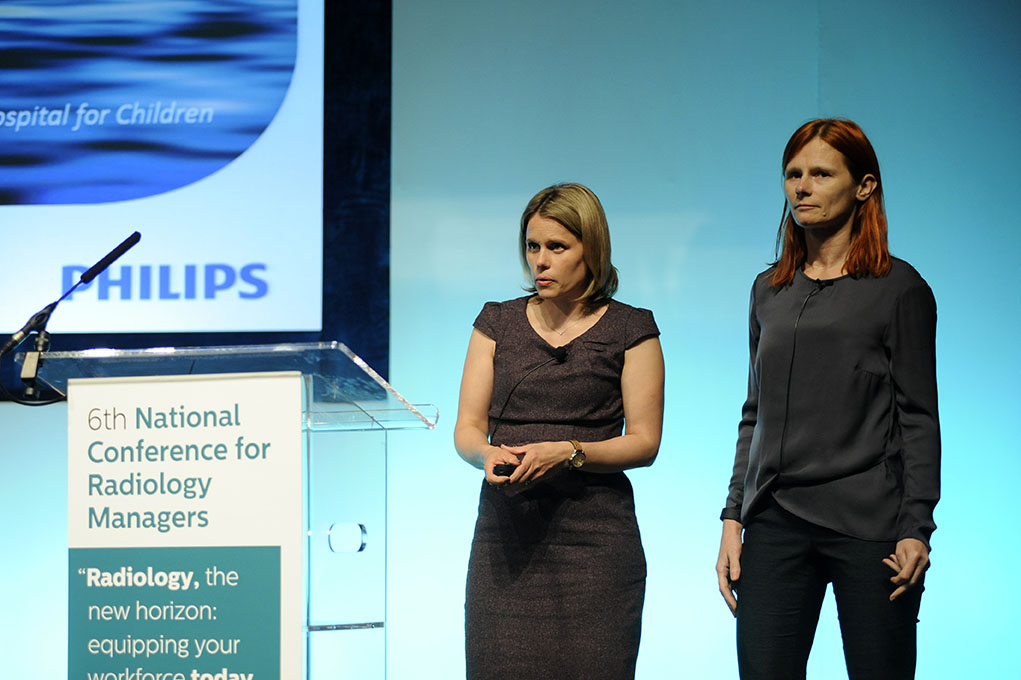Clare McLaren, Lead Radiographer and Clare Simcock, Consultant Radiographer at Great Ormond Street Hospital for Children, talked delegates through the benefits of the consultant radiographer role and how to get there for aspiring radiographers.
Clare M kicked off the presentation, explaining that the role revolves around four key pillars: Clinical expertise, leadership consultancy, education and training research, and practice and service development.
With this in mind, she outlined the overlap of work between radiographers and radiologists, and highlighted the attributes needed for radiographers to make the jump into a consultant radiographer role.
“If you are thinking about extending your role, you need to be able to make decisions autonomously, influence others, perform research and provide strategic direction.”
She also made the case of the benefits of the role, including the lower cost, the benefits of radiographer-led research in raising the profile of the profession and inspiring other staff members to enhance their own practise.
Clare S rounded off the presentation with her own perspective and her path to becoming a consultant radiographer. She recounted how she wanted to remain in a clinical setting, but wanted to progress her skills and development, working with a diverse team in diverse roles.
In taking on the role, Clare listed the new skills she’s acquired, including diagnosis, an appropriate knowledge of pathology, an understanding of treatment options, and communication skills with children and their families, colleagues and referrers.
She encouraged managers to push their radiographers towards consultant radiography saying: “It’s easy to implement, so encourage your radiographers. It’s about creating career opportunities that aren’t management based.”
